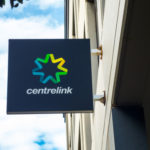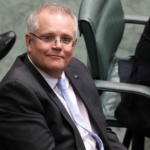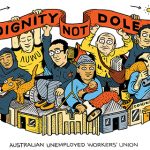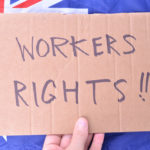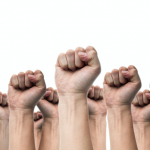Keep the Rate Raised: An Interview With ACOSS’ Charmaine Crowe

One good thing that came out of the COVID-19 crisis was that the over 700,000 Australians receiving the below-poverty-line Newstart allowance were suddenly lifted out of their hardship overnight.
As it became clear the lockdown was inevitable, the Morrison government launched the new JobSeeker allowance on 20 March. It replaced Newstart, doubling unemployment benefits from the unliveable $275 a week they had been for decades to a weekly payment of $565.
Despite long-term calls to raise the rate of Newstart, successive federal governments had simply refused to alleviate the desperate situation of the unemployed. Indeed, the dole hadn’t been increased in real terms since March 1994.
However, as COVID-19 restrictions led the number of unemployed to almost double overnight, the Coalition realised it wasn’t viable to simply punish the new lot of unemployment benefit recipients for not having a job, as it had been doing to those on Newstart.
Delusions of snapback
Early on in the lockdown, the PM was talking about a “snapback”, as if after hundreds of thousands had lost their jobs and numerous businesses had closed their doors, he expected the economy to suddenly return to what used to be considered the norm.
Part of his back to business as usual model entails the government cutting unemployment benefits to their pre-pandemic rate, as at present, the JobSeeker allowance has only been rolled out until 24 September.
Although, it’s highly unlikely that the shock the economy just experienced is going smooth over in a couple of months, with all the newly unemployed back at work again. Rather it’s more likely it’s going to take quite a while before we see anything like the employment rates we had in early March.
And while it may have been easy for the Liberals to sit back as three quarters of a million subsisted on an allowance that meant skipping meals was the usual, but it’s not going to be as simple to condemn double that to poverty rates, when they’re already receiving an adequate amount.
Punishing the poor
While never quite properly articulated, the ideological stance the Coalition has taken towards the unemployed has been clear: these are citizens not pulling their weight, who must therefore be starved off the dole and back into work.
But, the pandemic has now highlighted many misplaced assumptions we were operating under prior to its onset. And the doubling of unemployment benefits at its first sign is a clear admission that the old way was not only unfair, but also unsustainable.
Sydney Criminal Lawyers spoke to Australian Council of Social Service (ACOSS) senior advisor on social security Charmaine Crowe about the prospect of snapping back, the difference the new rate is making for former Newstart recipients, and why living on $40 a day just isn’t possible.
Firstly, in mid-March, the Australian economy went through an unprecedented shutdown as a preventative measure against the spread of COVID-19.
The changes have affected the employment of many. And now, the economy has begun a staged reopening.
In the understanding of ACOSS, what is the state of unemployment in Australia at present?
We’ve seen the biggest increase in unemployment in living memory. And what that has meant is that we’ve seen a doubling of the number of people accessing unemployment payments.
There is now 1.6 million people in Australia accessing JobSeeker, or the youth equivalent, compared with back in March.
We’ve also seen a huge increase in the number of people who are underemployed. So, they’re working fewer hours than what they wish. That’s around the 1.8 million mark now.
This has had a devastating effect for over hundreds of thousands of people across the country, given that they’ve lost their paid work, and are now accessing income support.
And thankfully, the government has moved to double unemployment payments, so people could at least afford the cost of essentials if they’re without paid work.
As you’ve just mentioned, the government doubled unemployment payments on 20 March, and renamed them JobSeeker. This occurred as around a million people suddenly found themselves unemployed.
Ms Crowe, what was the effect of rolling out an unemployment payment that’s actually over the poverty line?
For people who had already been receiving the payment, it has had an enormous effect on their lives.
We’re hearing from people daily. They’re writing to say that they’re now able to pay bills, while many have been buying clothing for winter, so they can stay warm.
People have been saying that they’re able to fill their trolleys with the groceries they need, but they definitely couldn’t buy when Newstart was just $40 a day.
It’s been a huge effect. It really shows the level destitution that people were experiencing before we saw the doubling.
Obviously, no one can live on $40 a day. It’s completely inadequate.
The doubling has had a huge benefit for hundreds of thousands of people, which is why we would like to see a permanent increase to these payments, so that people don’t fall back into poverty.
So, would you say that the $40 a day rate was helping to contribute to people not being able to find employment?
What is crystal clear to us is that the old rate of Newstart was definitely acting as a barrier to employment, and it’s one of the reasons why the Business Council of Australia supported a permanent increase to it.
The council could see that it was putting people into really difficult circumstances to try and get back into the labour market and put their best foot forward when trying to find a job.
One of the most common things we heard from people trying to get by on $40 a day was they were losing confidence, as well as not being able to eat properly, which was impacting their health.
But, the other thing was it had a huge negative impact on people’s mental health, as it had spiralled because of the severe financial stress they were under.
A situation like that, which condemns people to such horrible circumstances, doesn’t set people up for retraining, reskilling and building their futures.
If we’re wanting a system that supports people getting back into paid work, then at the very least, we need to ensure they have enough to cover the cost of essentials.
A recent Essential Poll found that the majority of Australians don’t think JobSeeker should be cut to pre-pandemic levels, however the PM maintains this is what’s going to happen. And it could happen as early as September.
What would it mean if the government simply cuts the rate overnight, especially now there are so many more people unemployed?
To use their terminology, if the government snaps back to $40 a day, we’re going to see a catastrophic effect on a huge number of people in the community. You would throw hundreds of thousands of people into poverty overnight.
I don’t think anyone has been suggesting that we are going to see the numbers of people who are unemployed suddenly reduce in September.
We know from past experience when people do lose their jobs during economic slowdowns, they tend to stay unemployed for a longer period of time, even when the economy starts to pick up. That’s particularly the case for people who are unemployed for 12 months or more.
Any suggestion that the government could revert JobSeeker back to $40 a day has been very sensibly criticised for putting across a bad idea.
Not only would it be tragic for people receiving those payments, but it would also be a negative thing to do in terms of economic recovery.
The Newstart allowance also entailed a mutual obligation system that involved searching for a certain number of jobs a month, working for the dole, and suspension of payments for noncompliance.
This system has been shut down during the lockdown. What do you think about the prospect of bringing it back?
We said from the outset that mutual obligation must be suspended whilst we’re in the midst of the lockdown.
It’s a risk to people’s health forcing them to do things like work-for-the-dole and other group related activities. Not to mention the fact that there are not many jobs going at the moment.
But, more importantly, on the other side of COVID, we need to move away from the current punitive system of compliance, as it’s a seriously flawed system.
Employment service providers are acting as compliance monitors, rather than providing people with the support they need to find paid work.
The average caseworker at these services has about 140 people on their books. So, you can’t really tailor support when you’re stretched like that.
We need a system on the other side that provides individual support to people, particularly those who might be long-term unemployed, or people with high needs in terms of getting a job.
We need to stop punishing people for not having a job through a really strict compliance system.
Despite long-term calls, successive governments refused to raise unemployment payments above the poverty line. But, with the onset of the COVID-19 crisis, the Morrison government immediately raised the rate.
What would you say this scenario has told us about the way the government had been operating the dole system prior to the pandemic?
The government understood that we couldn’t have a situation in Australia where so many were forced to live on $40 a day.
It’s a testament to the thousands of people who have been out there advocating for an increase to these payments.
It’s a testament to the stories and the tenacity of so many unemployed people, as well as those who have been unemployed that have been calling for the rise.
Basically, everyone in the community has called for a rise to Newstart: the business community, the unions, academics and economists.
The government finally listened and increased these payments, albeit temporarily.
Now we need to ensure that we never go back to $40 a day and that we have a system after COVID that protects people from living in poverty for good.
And lastly, Ms Crowe, ACOSS is recommending that the rate remains as it is right now. But, what are you expecting the government to do?
We’re in really uncertain times. The best thing the government could do right now is give people certainty, and a huge part of that is going to be ensuring there’s an adequate safety net in place for people who find themselves without enough work on the other side of COVID.
The key thing that people need to know is that if they don’t have a job, they’re not going to go hungry. And that means having a safety net in place that doesn’t mean you’re living in poverty.
Not only will that be the right thing to do for our community, but it’s a really critical thing for the government to do in order to ensure that our economy recovers on the other side.


